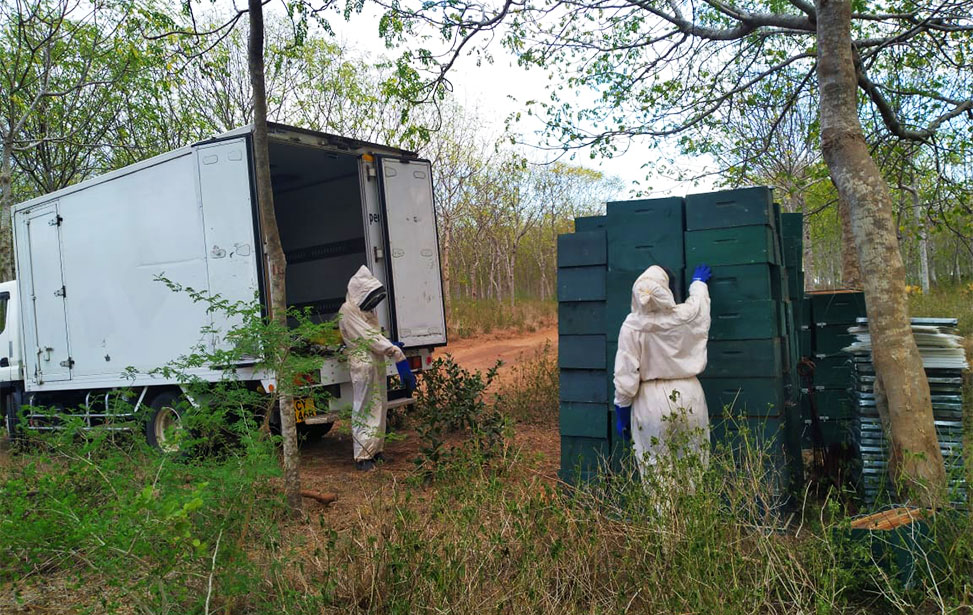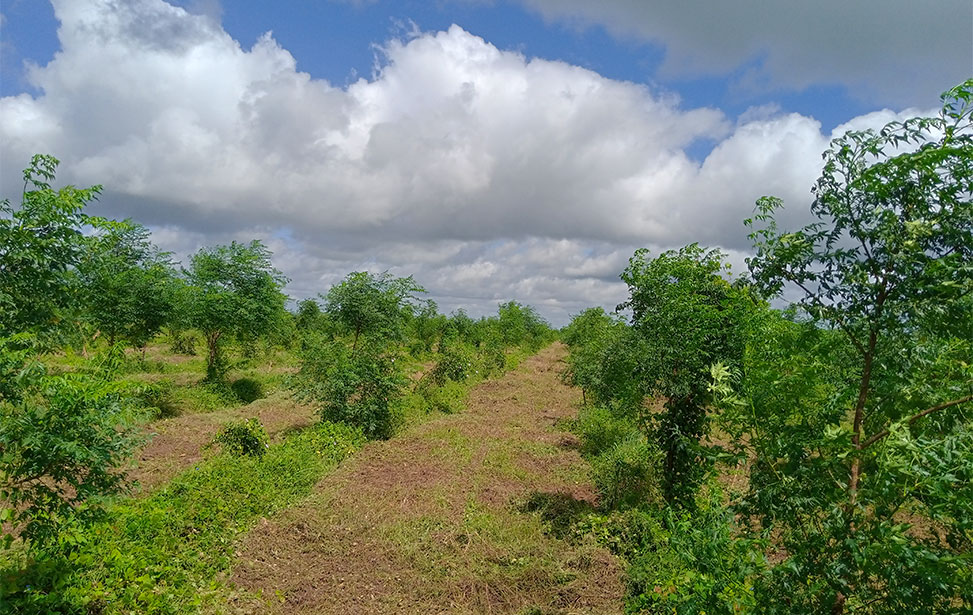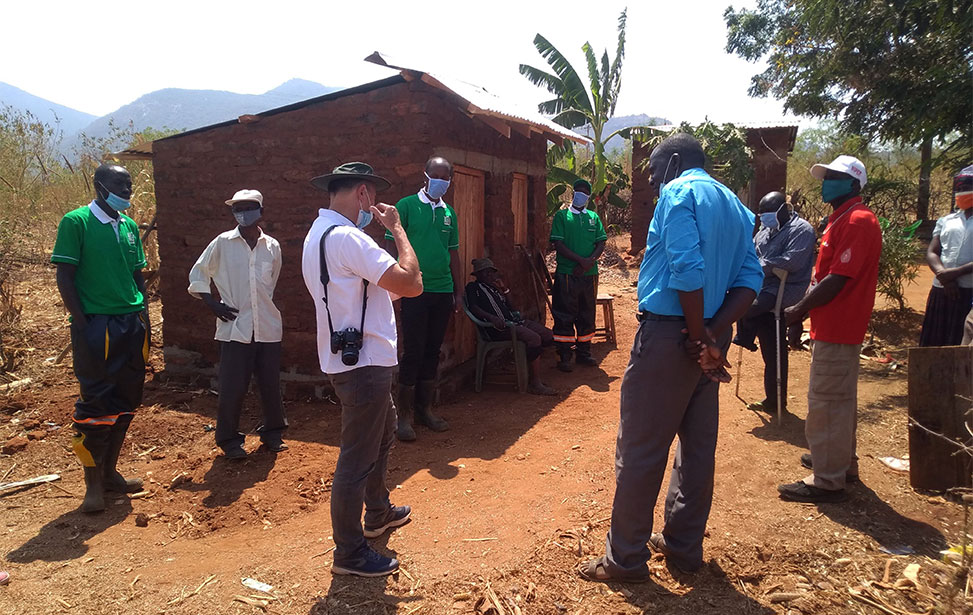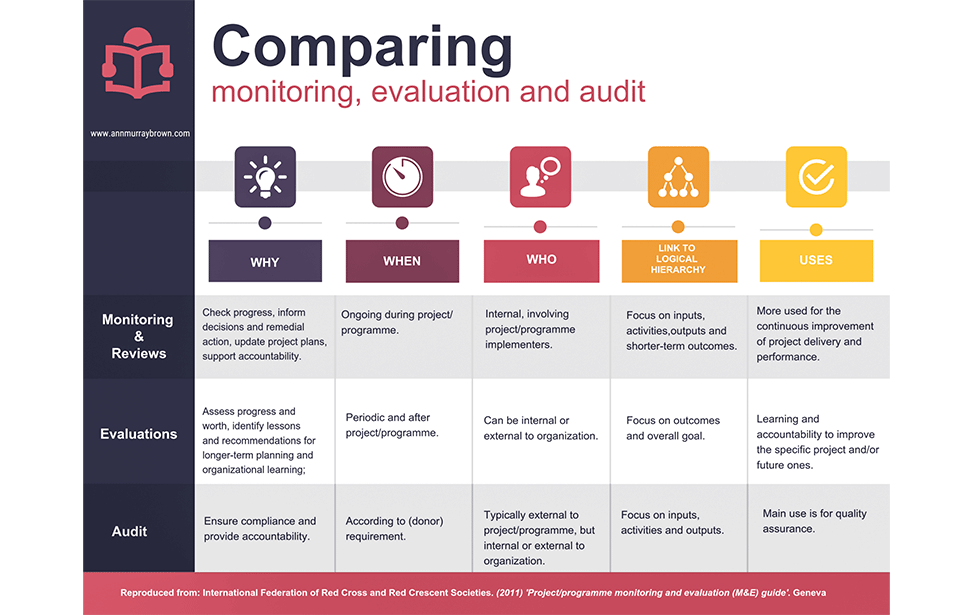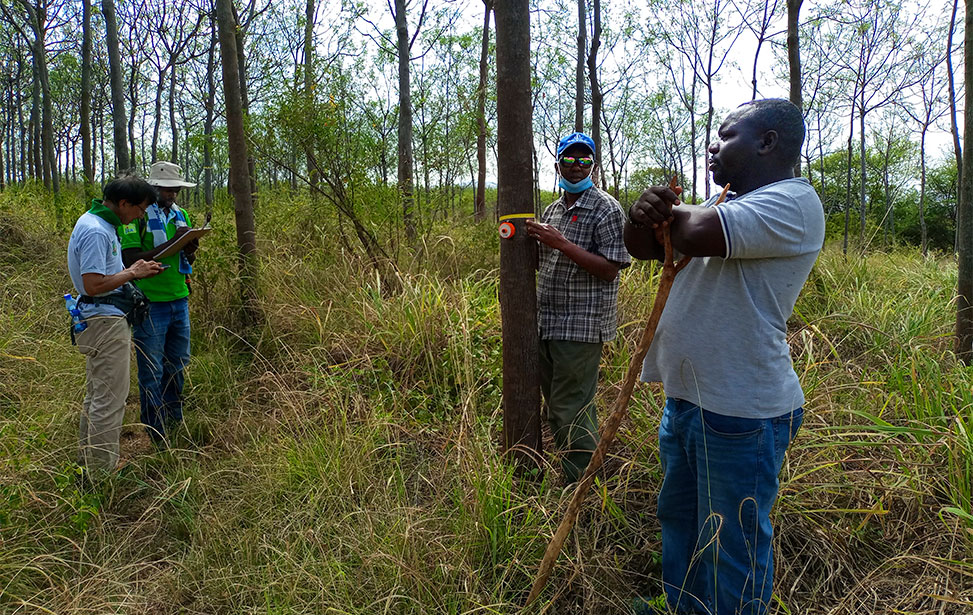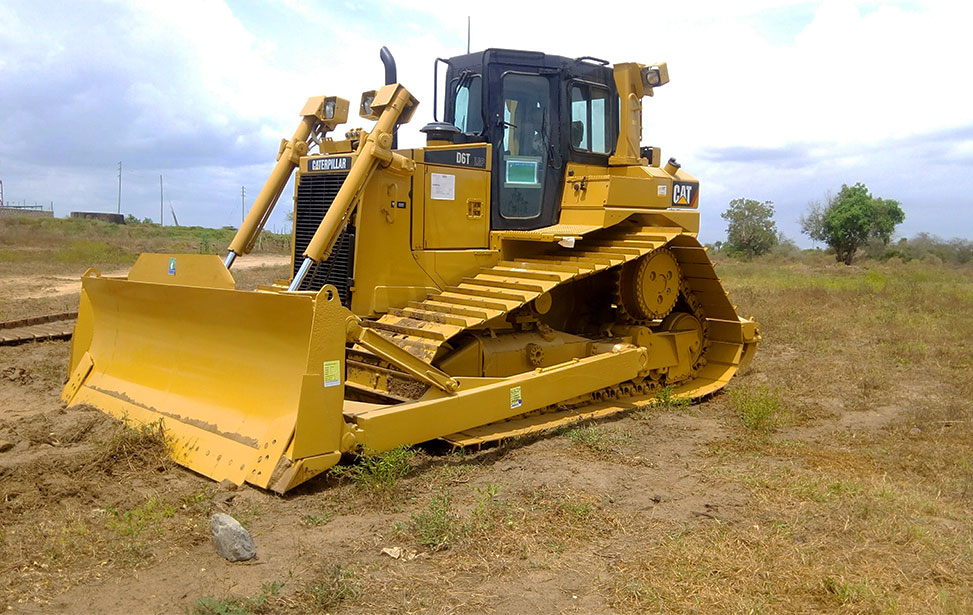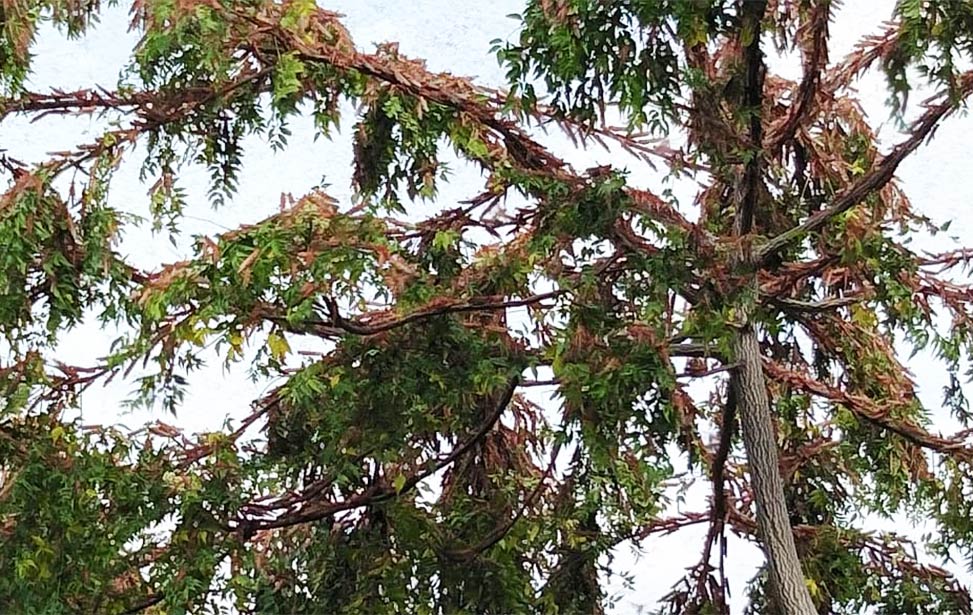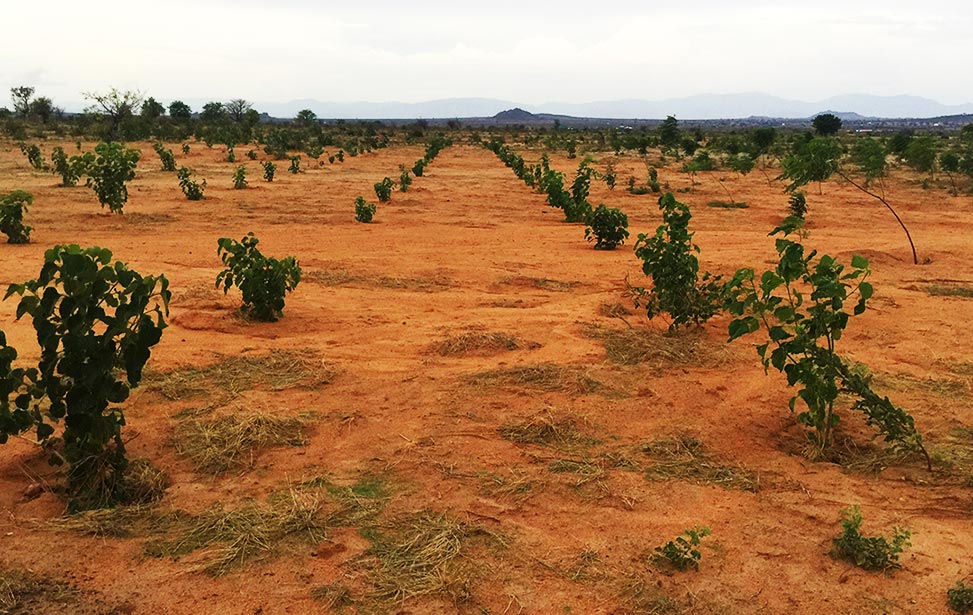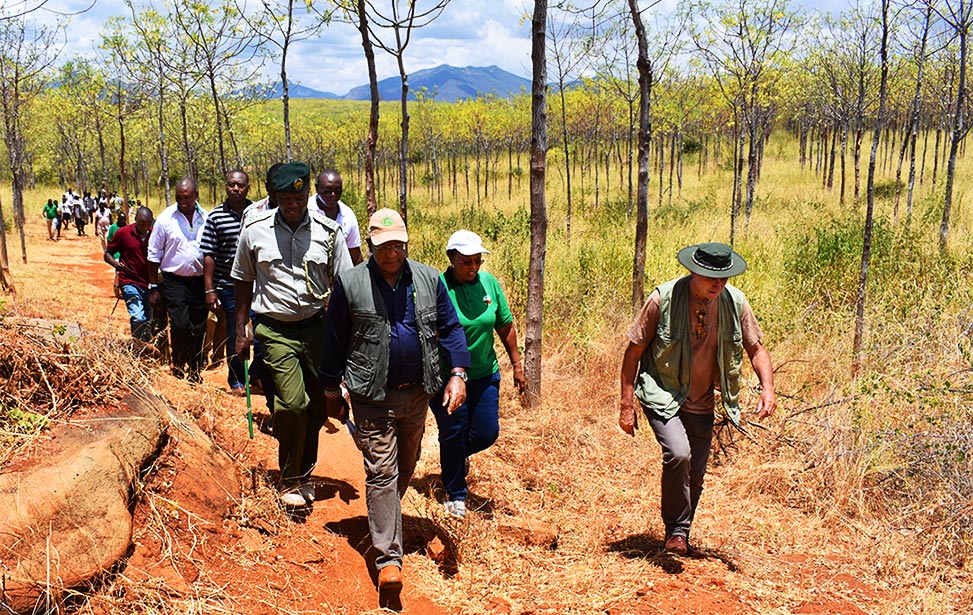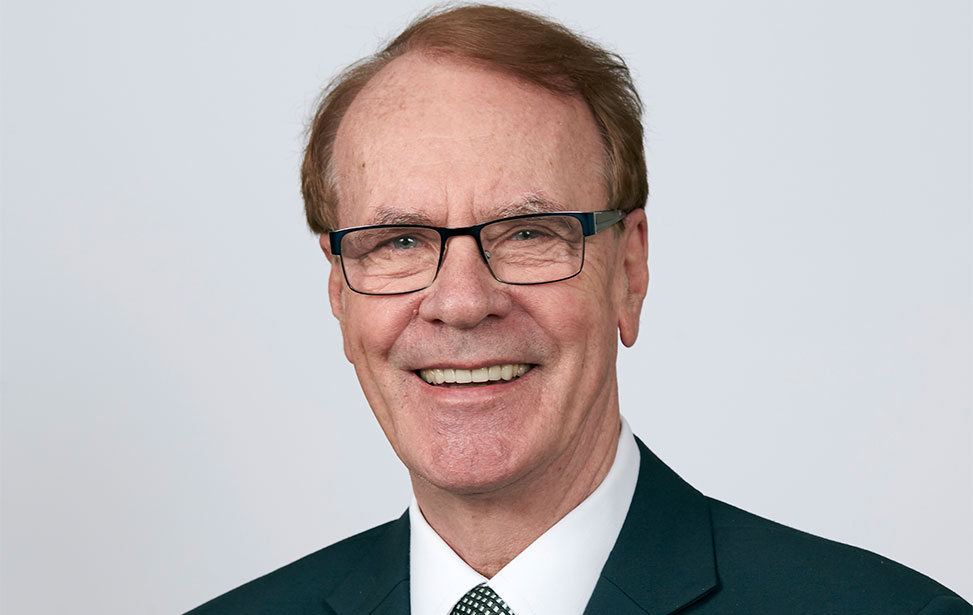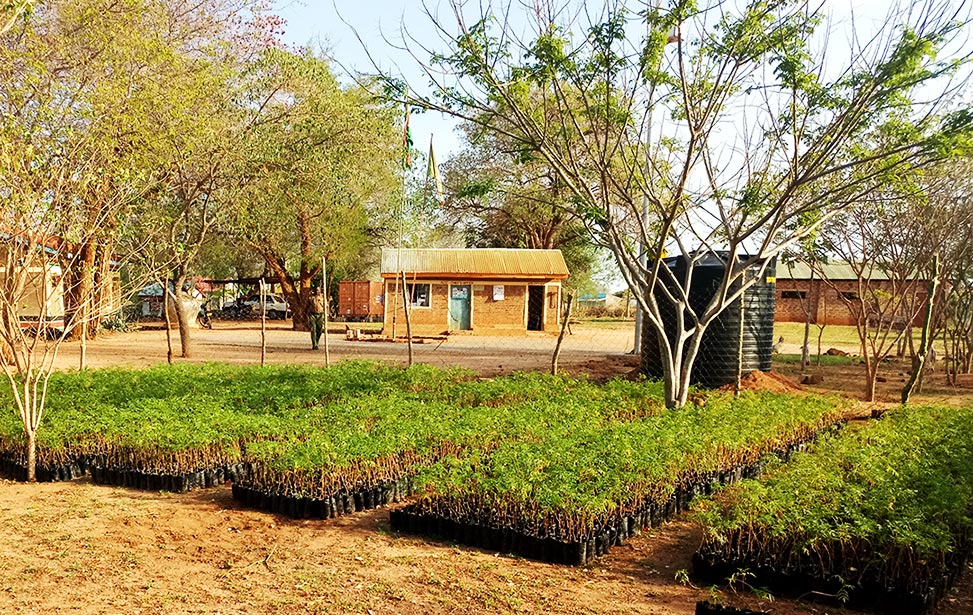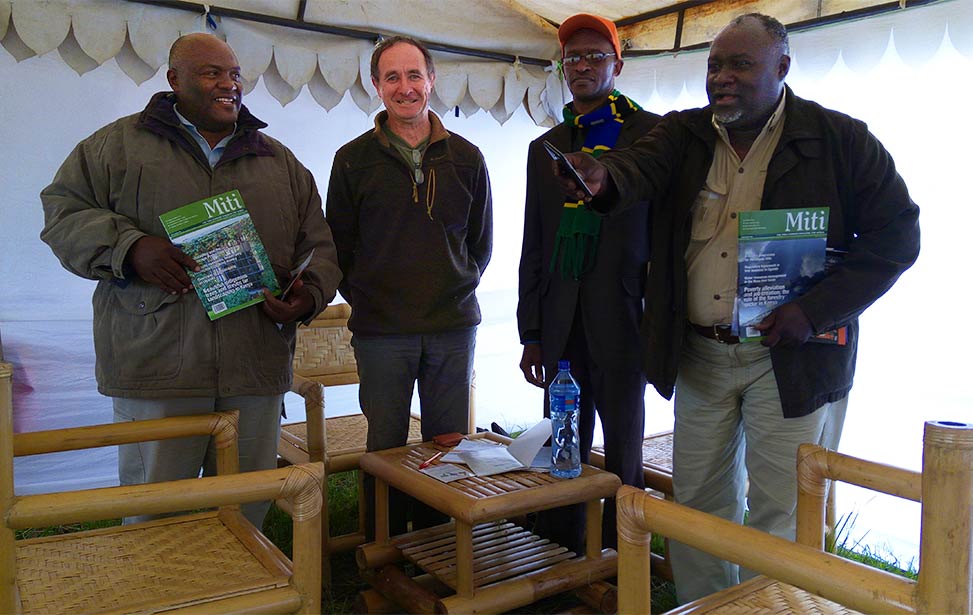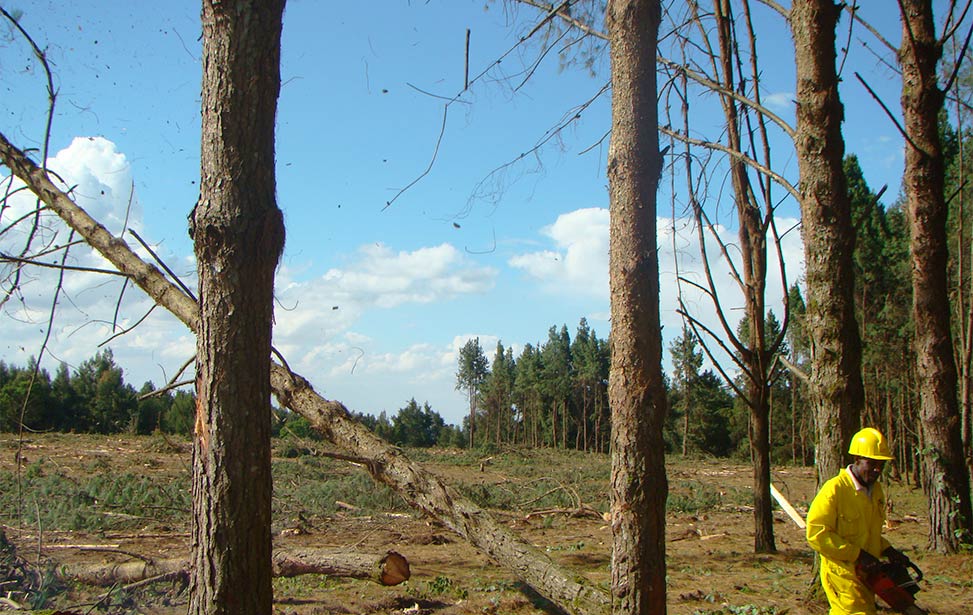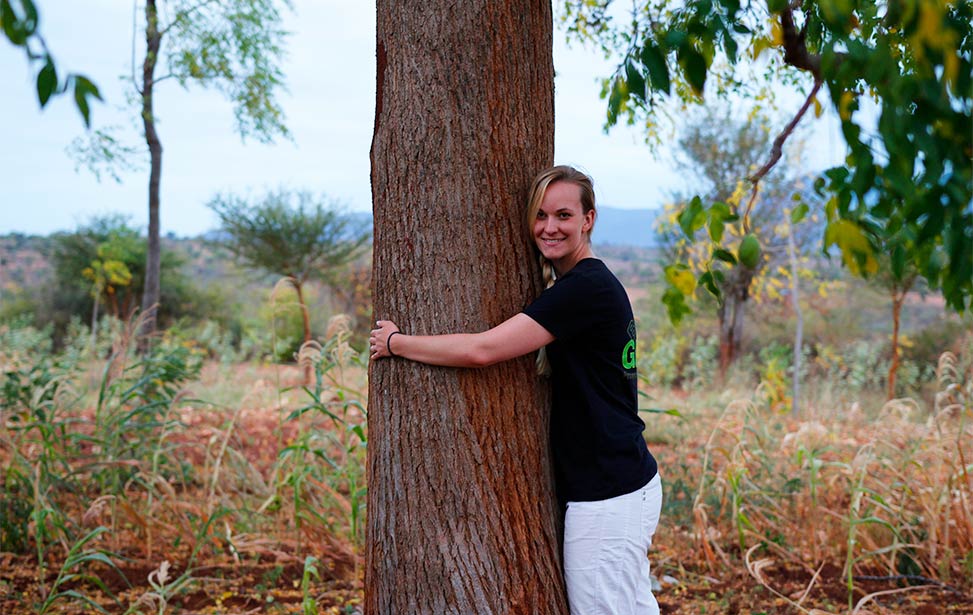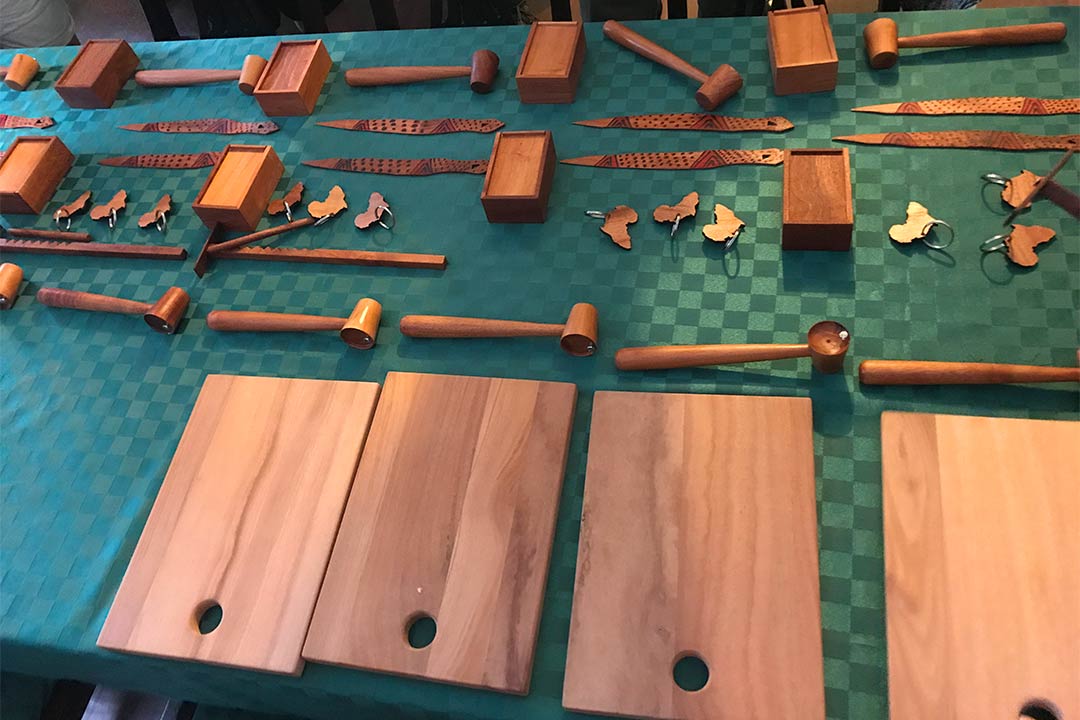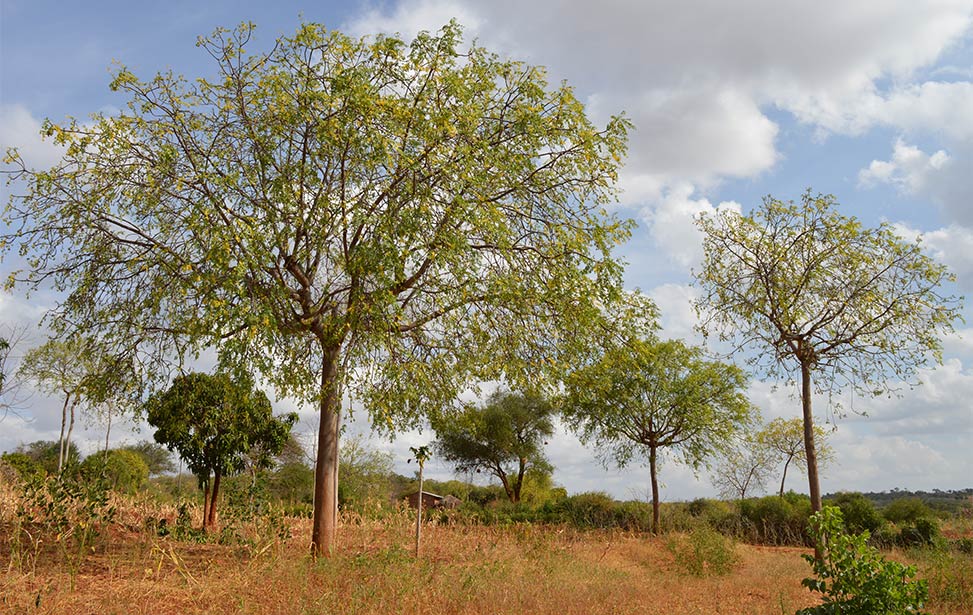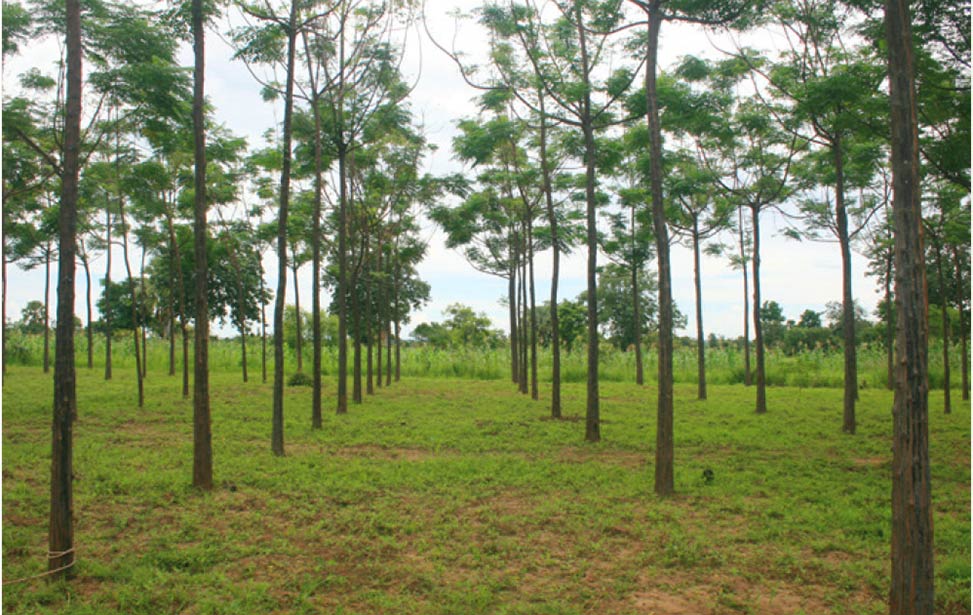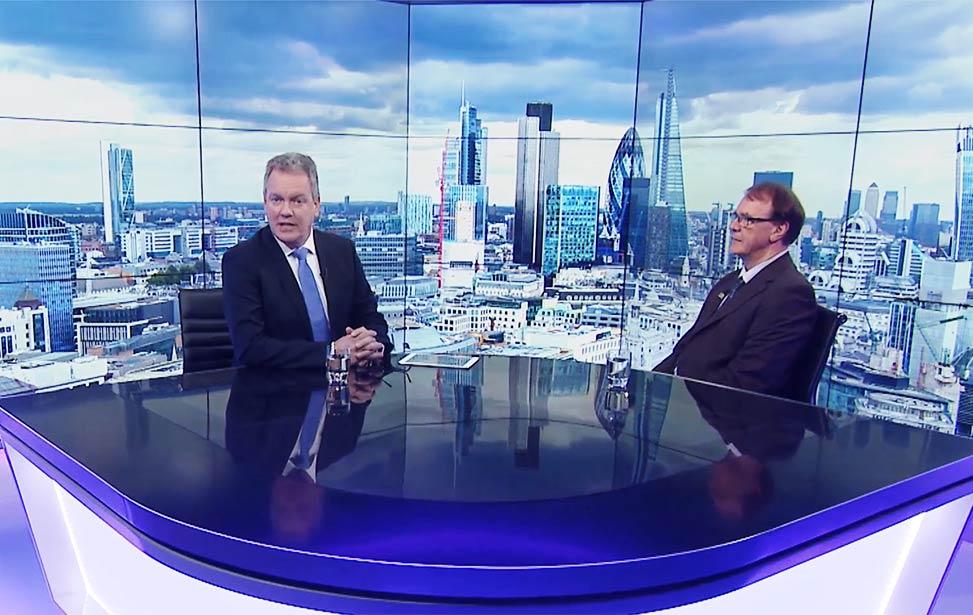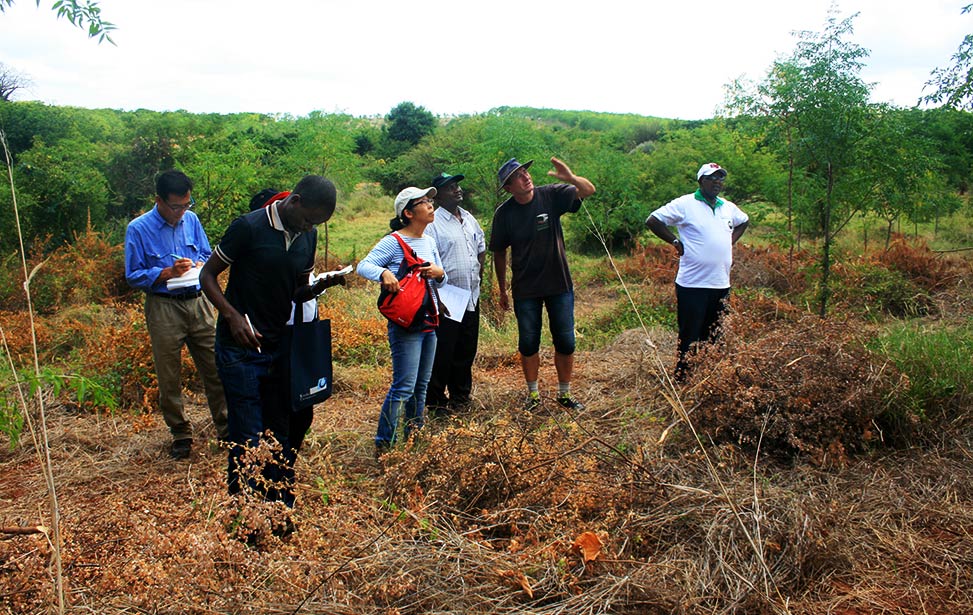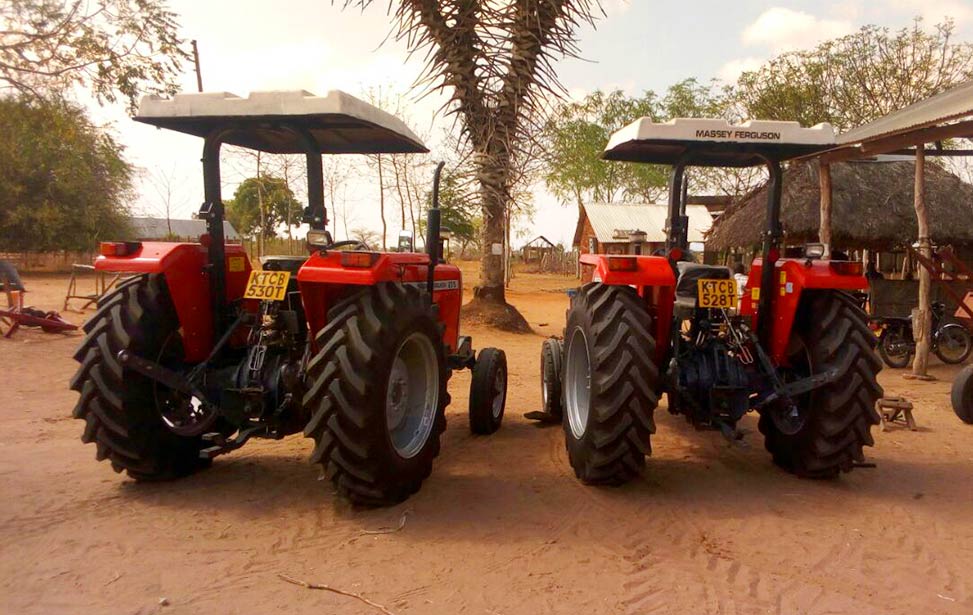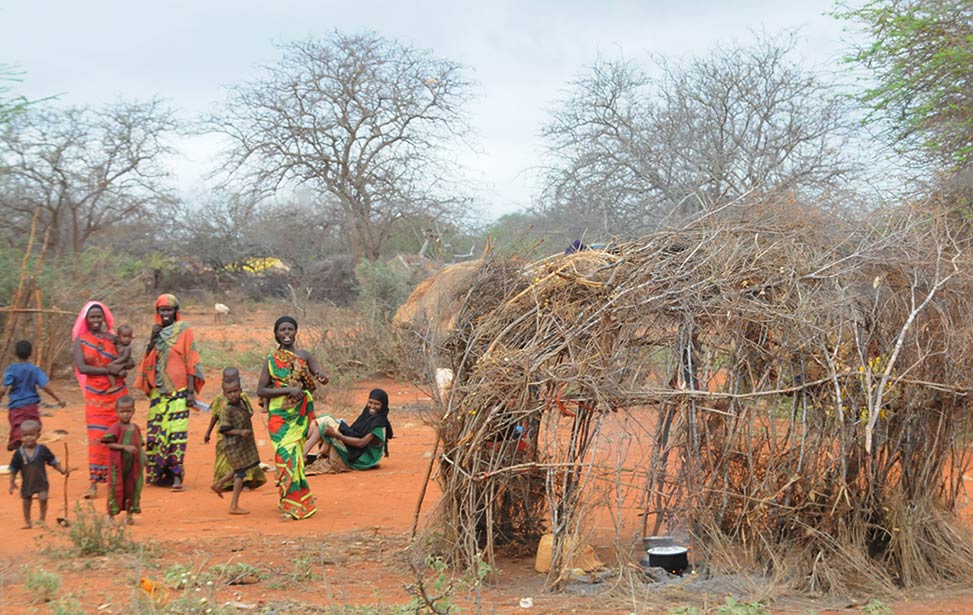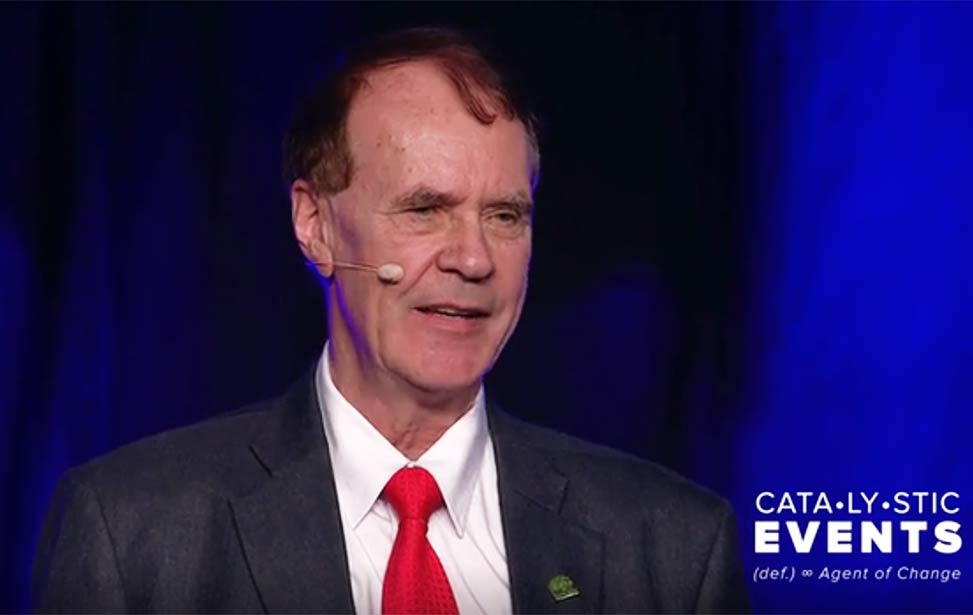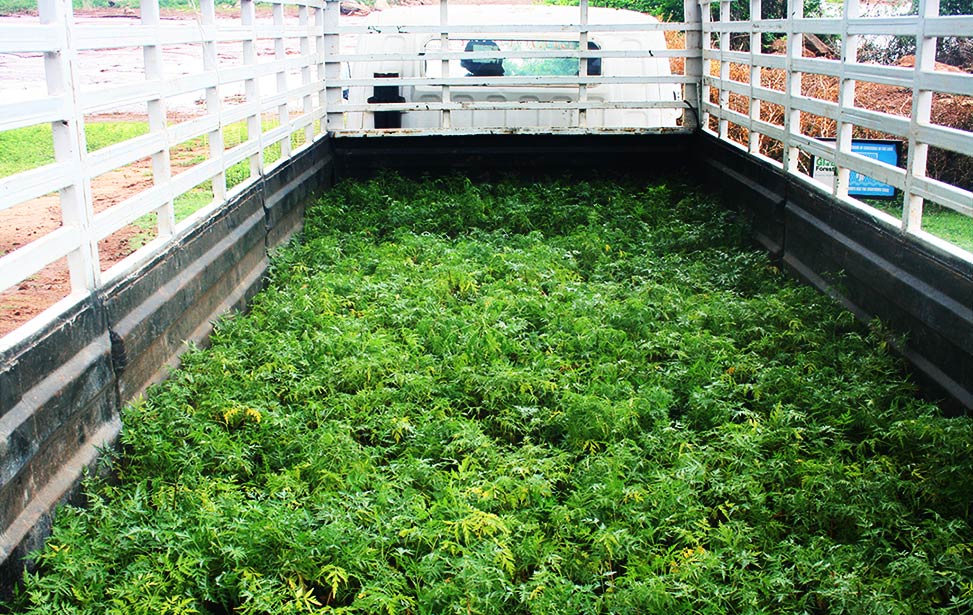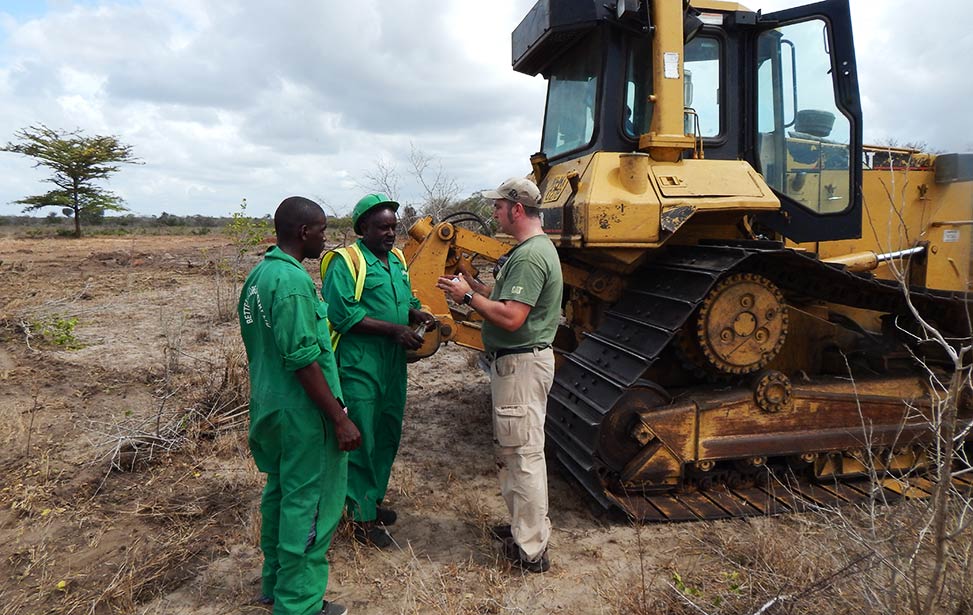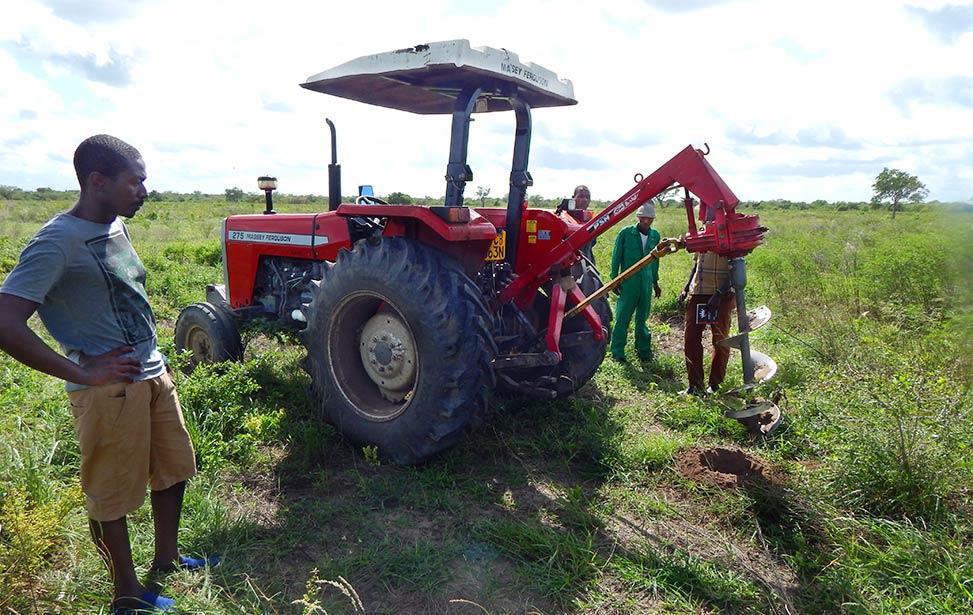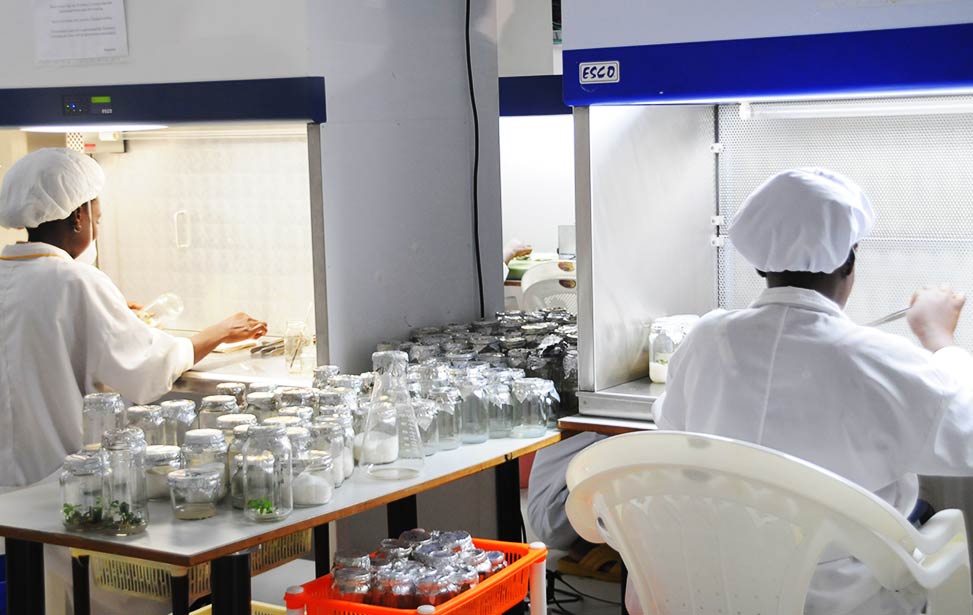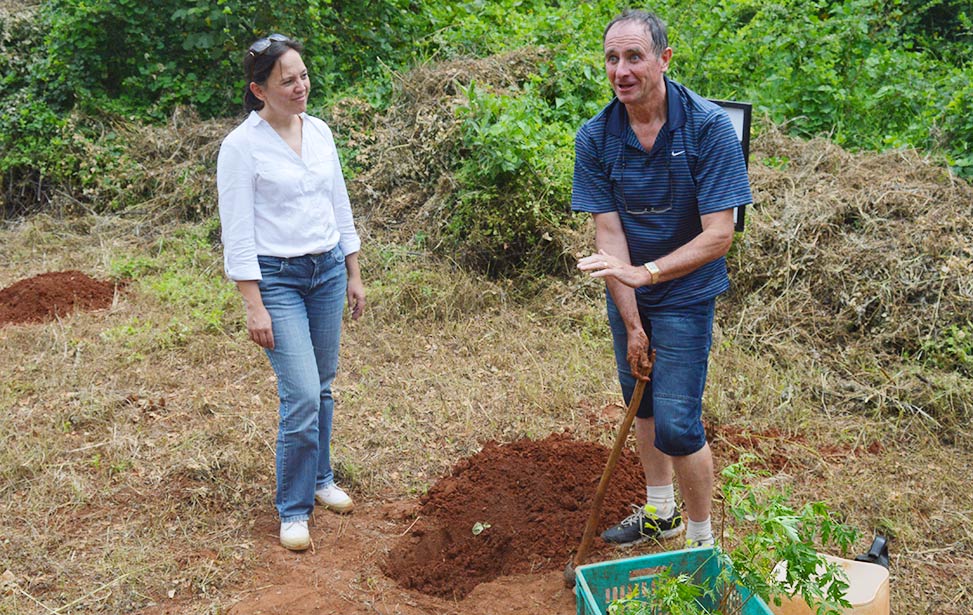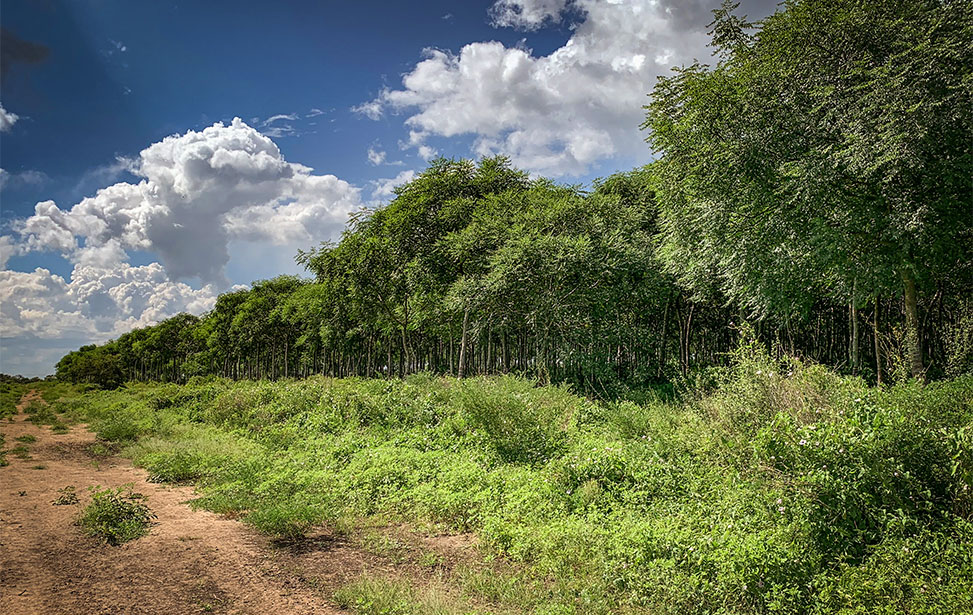
The boundary where the planted trees begin.
Photo courtesy: Torgny Johnsson
Visit to Nyongoro, Kenya
- Torgny Johnsson (translated and edited by Safeena Kassoo)
Better Globe customer Torgny Johnsson tells us about his visit to Nyongoro on December 5, 2018
Last month, one of Better Globe’s Swedish customers, Torgny Johnsson, visited the Nyongoro plantation on his own. Since 2015, the Ministry of Foreign Affairs has advised against travel to this area of Kenya because of security concerns with Al-Shabab operating in the border regions between Kenya and Somalia. Here you can read his story and see his experience.
Nyongoro is an area in northeastern Kenya where Better Globe Forestry began planting trees as early as 2012. They signed a cooperation agreement with the Wity-Nyongoro Ranching Society where they lease 21,500 hectares of land to plant Mukau trees.
Torgny is one of our Swedish customers who has spent a lot of time in Africa. He has traveled through large parts of both western and eastern Africa, both on motorcycle and as a travel leader for other travel companies.
On Wednesday, December 5, 2018, he drove a motorcycle from the coastal town of Malindi to the plantation. Below is his story that he posted on Facebook, republished with his permission:
My trip to Northern Kenya, where the State Department advises against visiting!
Many of you have seen my passion for Better Globe Forestry, a forestry company operating in Kenya, Uganda and now in Tanzania. Better Globe offers a fantastic tree profit that seems too good to be true! Since I Have purchased a large number of trees in a period of several years, and worked as an ambassador (seller) for the Norwegian sales company Better Globe AS, I thought that the best way would be to visit Better Globe Forestry in their own territory to bring back my personal experiences and share them with others. Better Globe certainly has customer trips every year, but I wanted to make my own trip.
After several weeks of mail correspondence, we settled on a date. I am used to traveling with a small motorcycle across Africa, so I was forced to rent one, since I had sold my old one. I paid a guy $10.
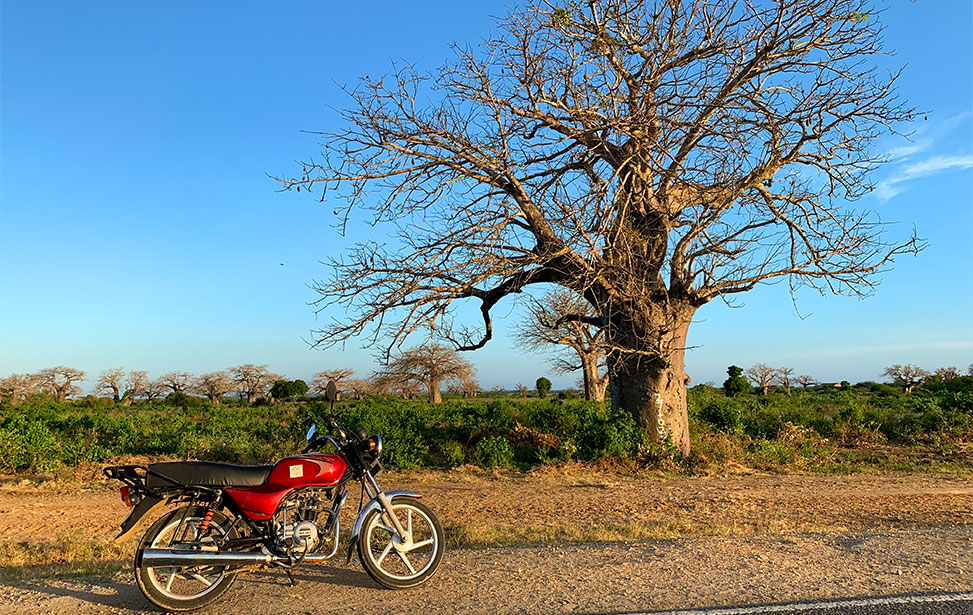
The motorcycle used to travel to Nyongoro
Photo courtesy: Torgny Johnsson
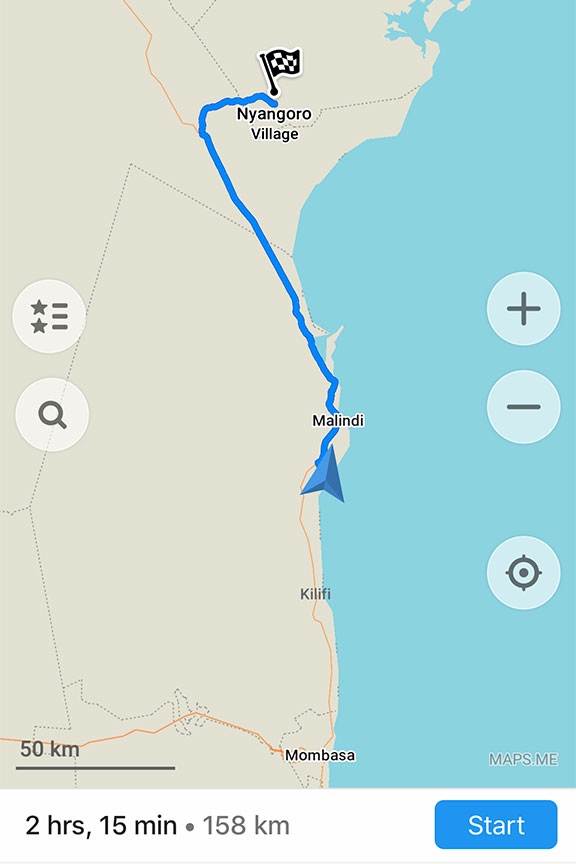
Malindi to Nyongoro according to the phone's GPS.
Photo courtesy: Torgny Johnsson
I started my tour at 8:30 from Watamu, and we had to change the battery and backlight before it was time to go. Slowly I slipped through the landscape northwards. The Ministry of Foreign Affairs does not recommend traveling through this part of the country, because Al-Shabab's presence is too prevalent. Last week, they kidnapped a 23-year-old Italian who volunteered at an orphanage, only 35km from where I stayed. It can make anyone feel insecure to travel that way, but what the heck, I had already decided to make the trip!
So, off I went! There was good weather, and the sun was shining. After Malindi came the first police check. They made furrows in their forehead when I told where I was heading. However, they let me go and there were no bribes I had to pay, which I anyway would have refused by principle. "Lock me in then," is usually what I threaten with. "I do not care!" That always work, since they don’t bother to drive all the way to the police station and they will lose money by leaving the roadblock, since they miss out getting bribes from others.
I traveled 60 to 70km/h and enjoyed life. It became more and more sparsely populated with buildings and people. You can drive half an hour without seeing a car nor a house. It becomes poorer and poorer. There are more Muslim the further north you go. Then came the next police check. A little confused, I said I was on a business trip. "Well, where's your work visa?" “And what should you do in Nyongoro? It's not okay that you go that way alone on a highway.” " Don't you think it's dangerous here!" I pointed out that I had to attend a meeting and was able to talk me out of it.
Once inside that road, the most comprehensive road check appeared. Police officers were armed up to their ears. They looked at me with big eyes as I stubbornly wanted to continue my journey, and with their warning words ringing in my ears, I continued on my motorcycle. During the end of the trip I saw many baboons, beautiful birds, and other animals. I thought Nyongoro was a society, but discovered too late that there were no one living there. Only a crossroad. After talking with some road workers a little further ahead, I realized that I had ridden too far and had to turn and ride back. I called my contact person Wallace who found and picked me up.
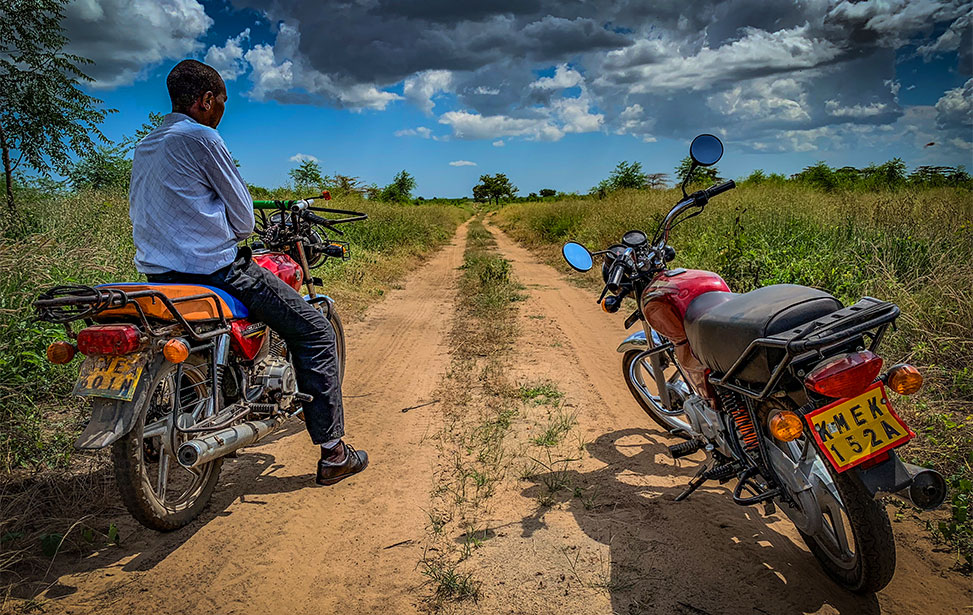
Wallace picked up Torgny from the plantation
Photo courtesy: Torgny Johnsson
Plantation in Nyongoro
Wallace is a really nice guy. He has been Nyongoro’s site manager since 2016. Better Globe Forestry established itself there in 2012 and have projects going on in different places in Kenya and Uganda, even back to 2004 when it all started. To date, they have planted around 2.2 million trees.
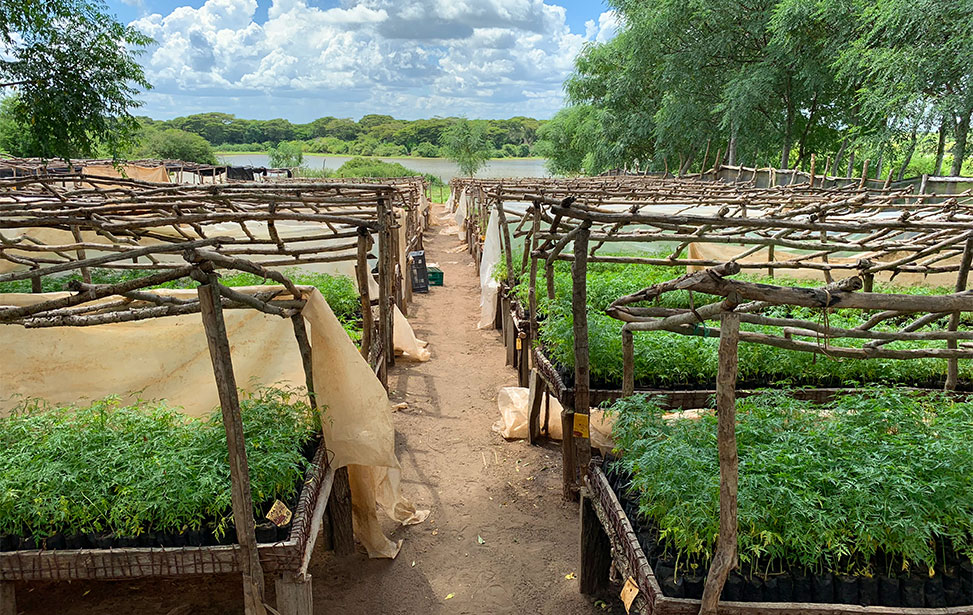
View from the nursery with Lake Moa in the background
Photo courtesy: Torgny Johnsson
We arrived at the site which is beautifully situated by a lake called Lake Moa and is part of a river system. We greeted the other leaders, Herman and Juma. They entered me in the guestbook and I was the first customer to visit the plantations since 2012, after the security situation changed.
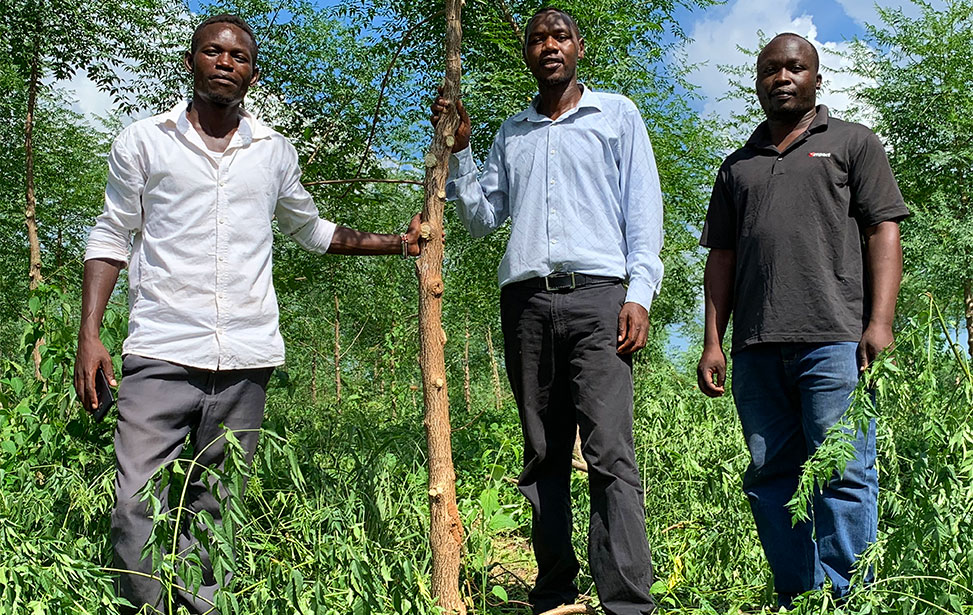
Nyongoro leaders Wallace, Herman, and Juma
Photo courtesy: Torgny Johnsson
They proudly said that they have 52 permanent employees with 92 part time employees who are taken in as needed. Usually around 70-100 Kenyan workers are working there at the same time, but the number can rise to 144 during high season.
After the intro, we went to the tree nursery department where all the seedlings are grown. The seeds that are large as a sweet almond are treated by removing the tip at one end and then cut with razor blades along one side. They are soaked one day, then they are planted in moist sand. 5,600 seedlings are sown in 280 rows with a width of 20 seeds on each row. They grow there for about seven to ten days. In step two, the small plant shoots are removed and planted in small containers made of plant fibers with special soil that they mix together. They can remain there for up to two weeks. Everything is surrounded by plastic to control heat and humidity.
- Related article: Planting Process of Mukau Trees - Part 1
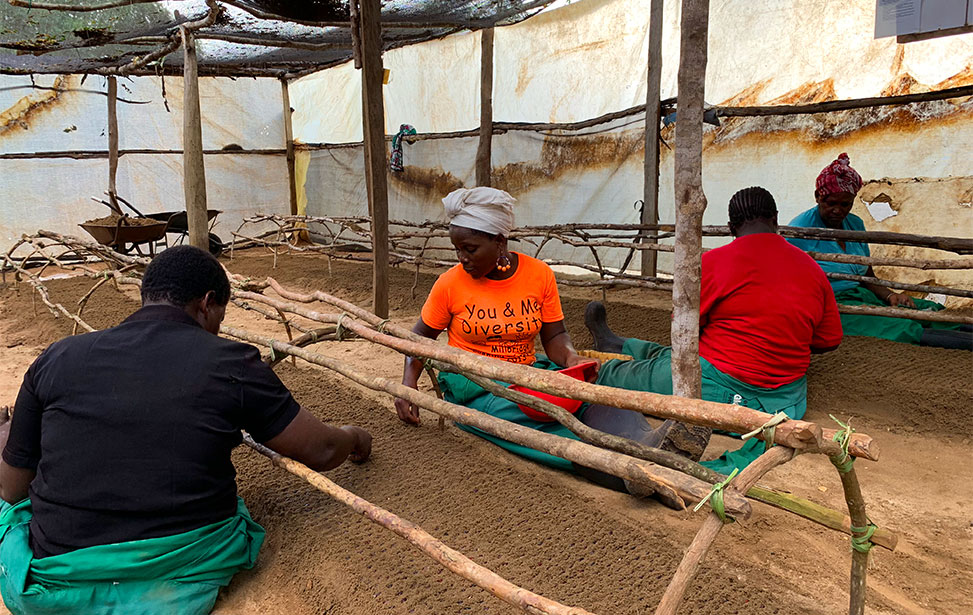
Nursery workers putting seedlings in rows
Photo courtesy: Torgny Johnsson
In step three, the plants are removed from their plastic and they get time to get used to the surroundings. In step four, they are prepared for direct sunlight. They are watered and screened off, to protect against too much sun and too heavy rain. The plants still have no control of themselves and are sensitive to mechanical influences. They stay in this environment for two weeks before it is time for the next and last step.
Step five requires the plants be placed in direct sunlight without protection. They are then planted in an open environment and begin their actual growth cycle. The capacity is 30,000 plants per month. However, growing seedlings cannot be done every day of the year yet, so production takes place in different stages at different times of the year. Right now, they have 93,000 tree seedlings in production and a total of 412,000 trees have been planted on 490 hectares of land. Each year they count the trees by hand and then make a color marking on the tree that is also used to measure the height and growth. During 2019, another 390 hectares are planned to be utilized for tree planting.
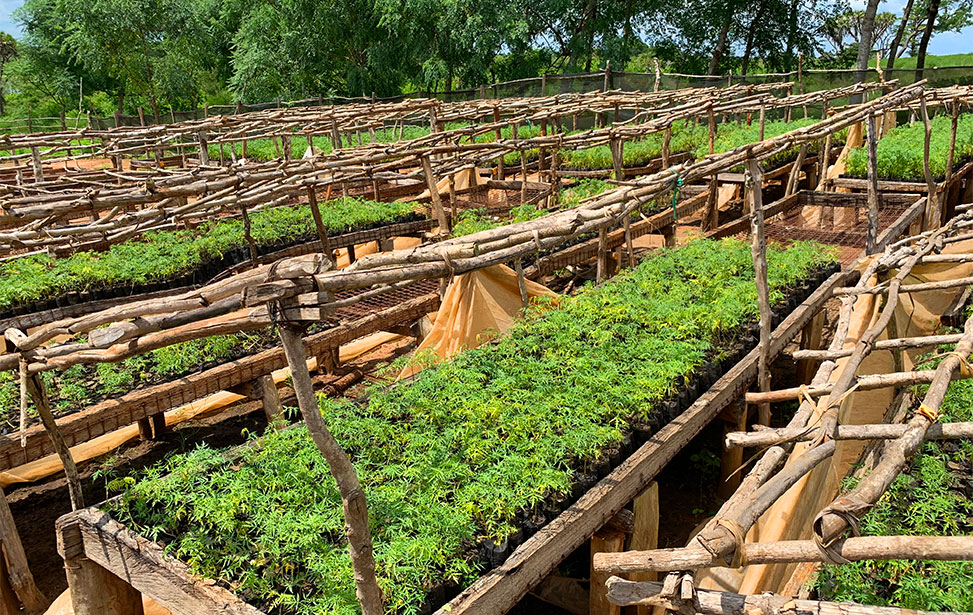
Seedlings in direct sunlight
Photo courtesy: Torgny Johnsson
Biodiversity has increased
We took three motorcycles and crossed the road. The tree planting starts there. There were trees everywhere, big and small. The wildlife here is more noticeable than along the way to here. They recently received two new tractors and they cut the grass between the tree rows to facilitate growth. Previously, all the work was done manually. We went to a large water reservoir that was filled up with water from the lake. Here it is pumped over to water tanks all over the plantation. They keep different areas untouched for the sake of wildlife. So all varieties should thrive and flourish.
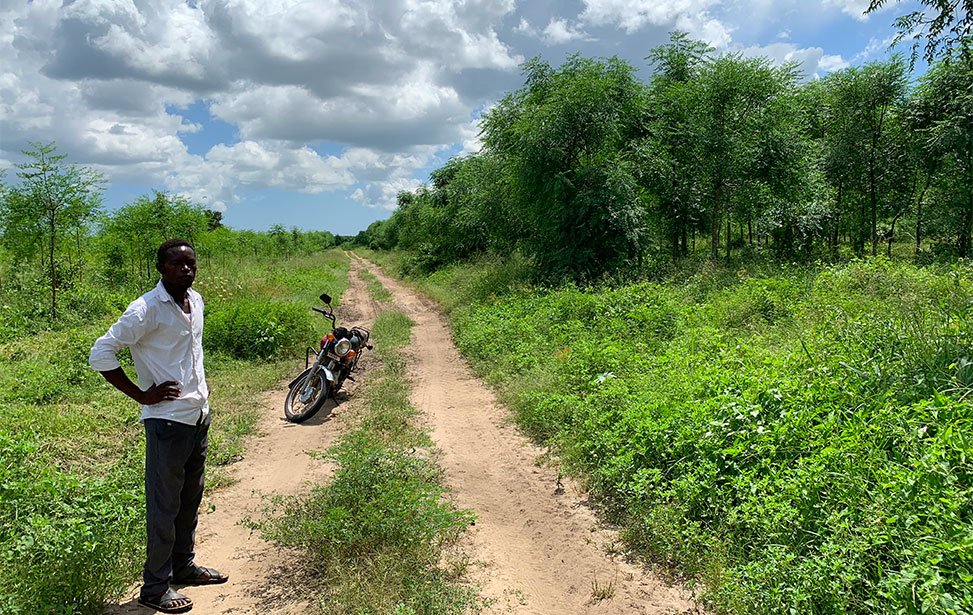
At the start of the plantation
Photo courtesy: Torgny Johnsson
We found some shadow and I had time to ask questions about how it was to work for Better Globe Forestry. They were very satisfied. The salary comes as it should. They have health care and insurance. The chairman of Better Globe Group, Rino Solberg, was there the week prior to visit them. Four times a year, the management and all site managers in Nairobi gather to report and take part of the company's visions and thoughts.
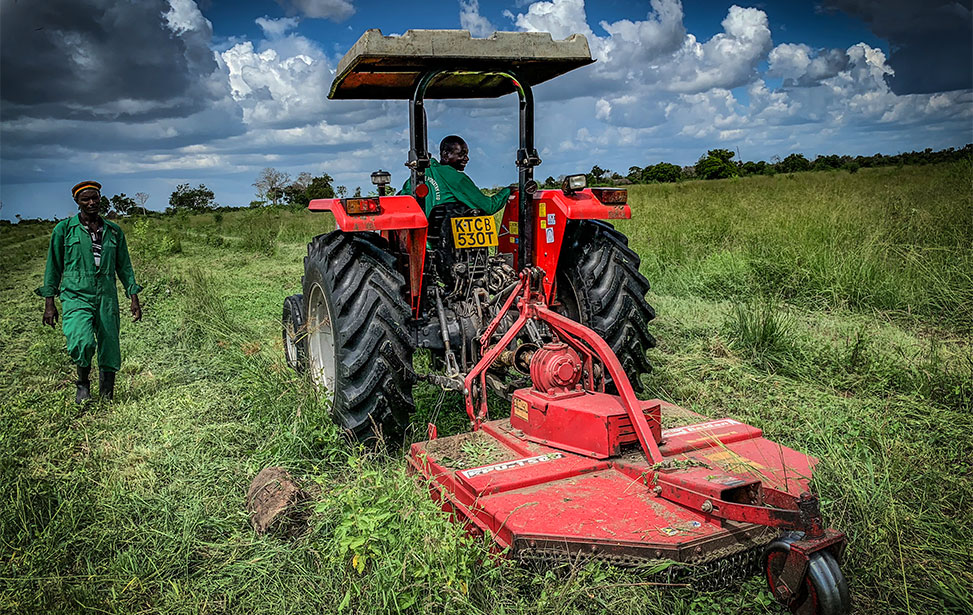
Tractors help to cut grass and facilitate growth
Photo courtesy: Torgny Johnsson
In conclusion, we first looked at trees planted in 2013 and 2014. They manually cut off the branches that protrude from the trunk, so that they will grow stronger and yield better timber. When they reach a height of four meters, they stop pruning them and the tree crown rises with a straight, fine tree that grows in length and width.
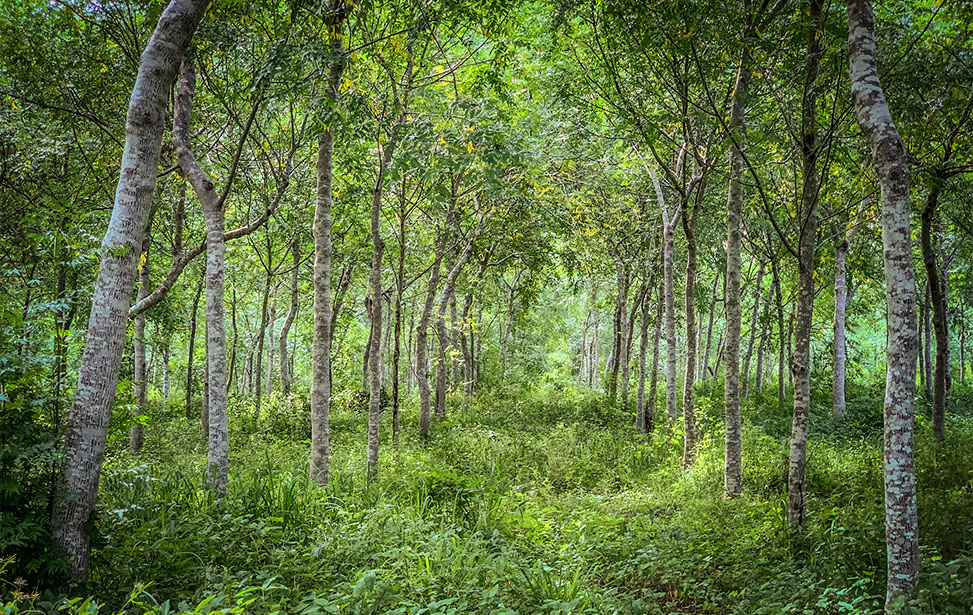
Trees planted in 2012, 2013, and 2014
Photo courtesy: Torgny Johnsson
When we got to the forest that was planted in 2012, I was amazed. In here, under the branches, it was like another climate zone. It was cooler, healthier, and more humid, and completely different from the dry semi-arid area that followed me along the road to Nyongoro. They measure the amount of water in the soil, and the seedlings help to bind water in the ground and prevent desertification.
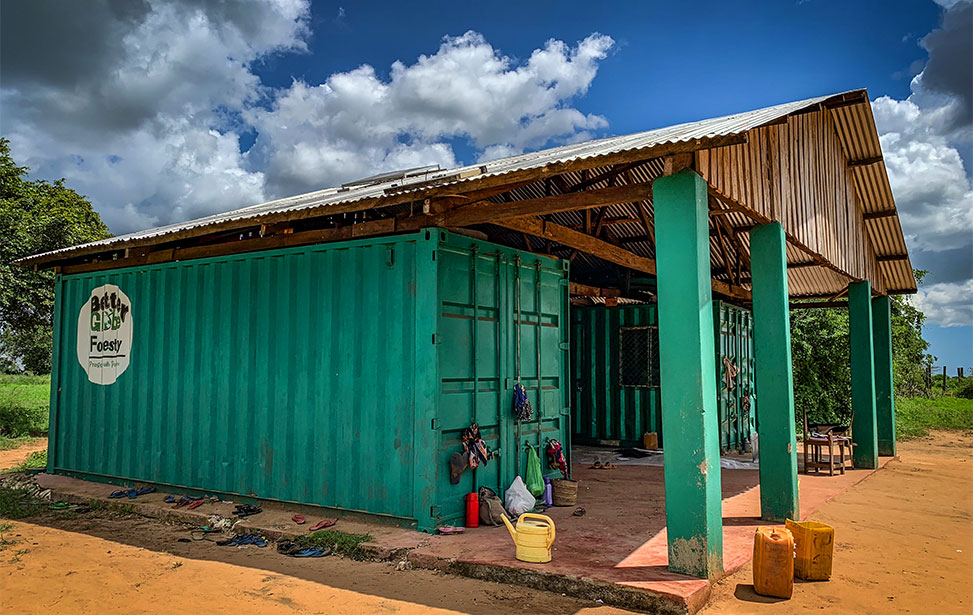
The head office and warehouse on Nyongoro plantation
Photo courtesy: Torgny Johnsson
We got back to base camp, and I asked questions about the security situation. I was told that last year (2017), Al-Shabab carried out an attack on a bus around the corner. They forced every passenger out of the bus, who then had to sit on their knees with their hands behind their necks. Then they said, "Say something from the Koran," Those who could, would live. The others were executed with a bullet in the neck. About 30 people were executed. Thankfully, Better Globe Forestry and its workers have never been affected by the activities of Al-Shabab. They also have no problems with theft, damage, etc. inside the plantations.
After a very interesting visit, I had to say goodbye and we split up. They kindly asked me to come back. I think they appreciated our hours together, as much as I did. I am pleasantly surprised by what I saw and got to experience at Nyongoro. I can only imagine how lovely and green everything will be in 10 to 15 years when everything has grown, and the forests spread. Then the sawmill will be ready, and the timber will be cut and processed before it is sold. This creates additional jobs that stay in Africa before the final product is shipped to Asia and Europe.
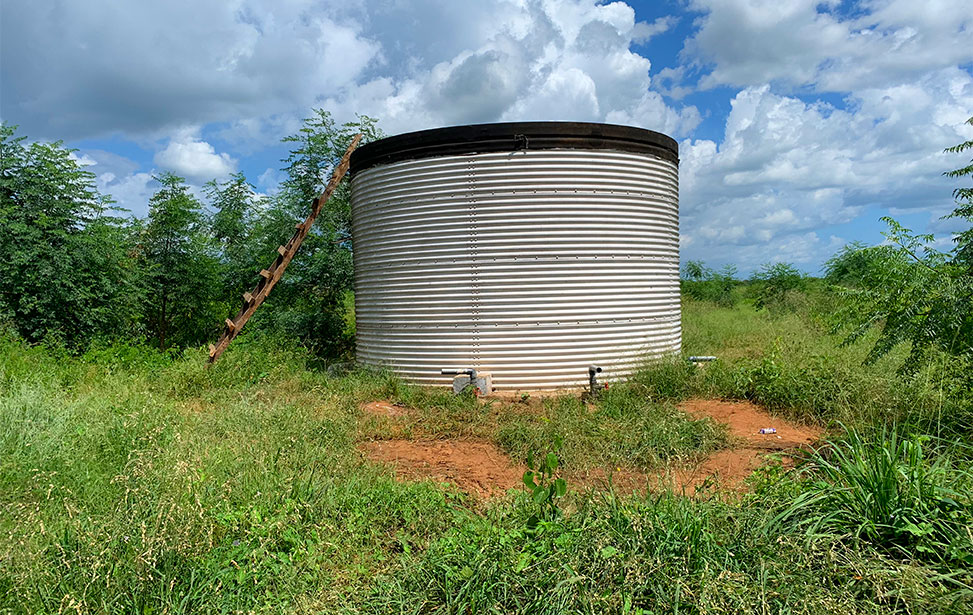
Cistern for storing water for the nursery
Photo courtesy: Torgny Johnsson
My trip back was pretty uneventful. I stayed in Maleli Village, ate and sat alone with my own thoughts. Now more people were out on the streets and they were looking at me wherever I went. You see no white people here. Again, the police questioned me why I was riding around there myself. (Maybe I'm a disguised financier to Al-Shabab). However, it goes okay and back to Malindi the life was swarming again, with a lovely mix of Muslims and Christians living side by side. There were also a lot of Italians here. They are over-represented in the area, even in Watamu.
I drove the last stretch after it became dark, and at a police check I was told to stay, but I thought they were talking to someone else and I continued riding my motorcycle. They started shouting after me, so I figured out to get away as fast possible. I checked the rearview mirror carefully to see if they would chase me, but nothing happened. Once back in Watamu, I drank a cold beer, had dinner, and returned the motorcycle.
I fell asleep well this evening. It was a great day!

